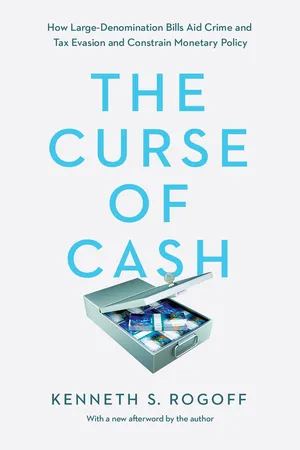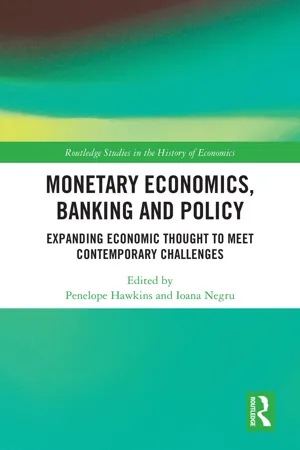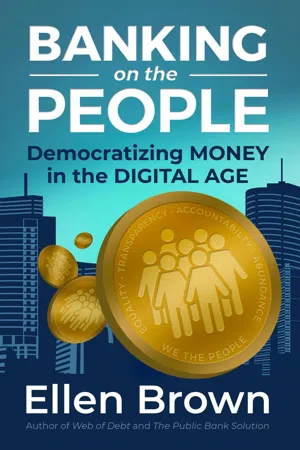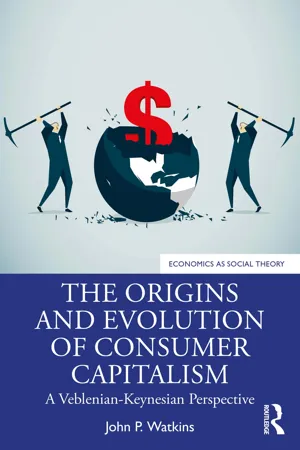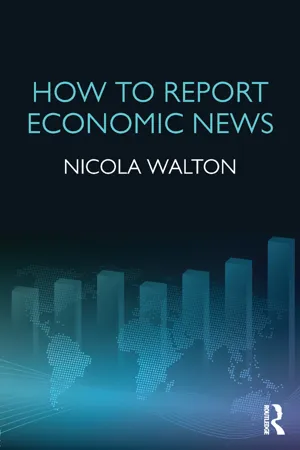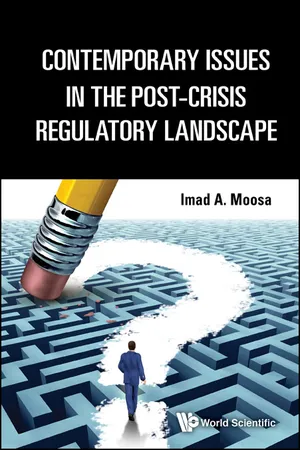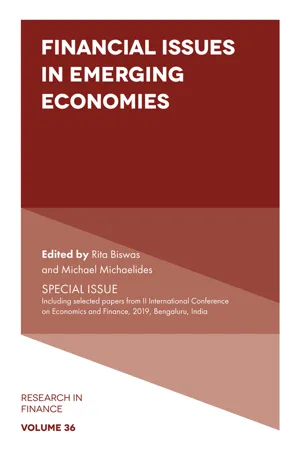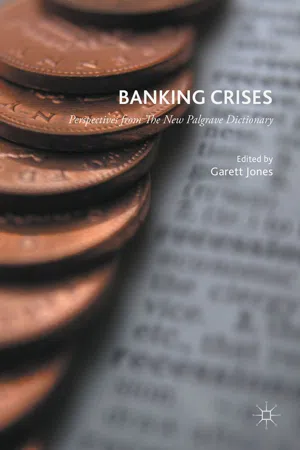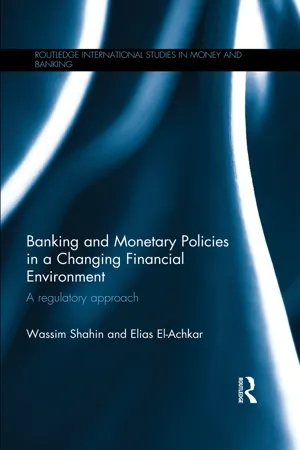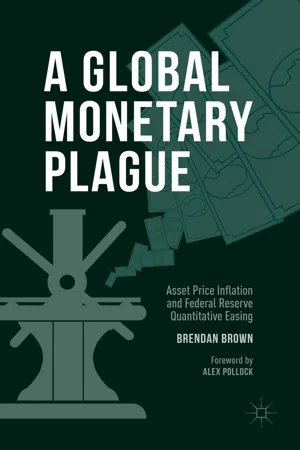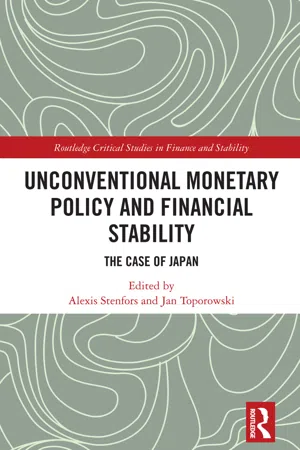Economics
Quantitative Easing
Quantitative Easing is a monetary policy tool used by central banks to stimulate the economy. It involves the purchase of government securities and other financial assets to increase the money supply and lower interest rates. This aims to encourage borrowing and investment, thereby boosting economic activity and inflation.
Written by Perlego with AI-assistance
Related key terms
Related key terms
1 of 4
Related key terms
1 of 3
11 Key excerpts on "Quantitative Easing"
- eBook - ePub
The Curse of Cash
How Large-Denomination Bills Aid Crime and Tax Evasion and Constrain Monetary Policy
- Kenneth S. Rogoff(Author)
- 2017(Publication Date)
- Princeton University Press(Publisher)
27Empirics of Quantitative EasingEven though the empirical evidence on QE is far from decisive, pretty much everyone agrees that the first round of US Quantitative Easing, at the height of the financial crisis , was very important. The Fed—operating with extraordinary creativity—plugged holes in a wide range of private markets and prevented a much deeper collapse.28 Other central banks around the world engaged in similarly aggressive policy, albeit their scope for doing so was very much affected by pressures and constraints from governments. However, at least for the United States, there is much more skepticism about whether later rounds of QE, after things had calmed down, were also effective. These later episodes are commonly referred to as QE II and QE III.As noted earlier, fairly incontrovertible evidence indicates that major announcements of changes to Quantitative Easing policies have significant short-run effects on the bond market. When on March 18, 2009, the Federal Reserve announced that it would purchase up to $300 billion of additional long-term government bonds, US 10-year bond rates dropped by 40 basis points (0.4%) within the hour. When on May 22, 2013, Federal Reserve chairman Ben Bernanke suggested that the Federal Reserve would begin to taper back its roughly $85 billion a month purchases of bonds and mortgage-backed securities, global financial markets immediately went into a tizzy in what is now known as the Taper Tantrum. In one of the most influential early academic studies, Arvind Krishnamurthy and Annette Vissing-Jorgensen found that the second round of QE conducted by the United States, which involved only purchases of government bonds, brought down long-term interest rates by roughly 50 basis points.29 But as already noted, this kind of evidence is fundamentally an event study that is most useful for understanding immediate impact effects. It is much less informative about the long-term effects. Here the evidence is far more difficult to discern.30 - eBook - ePub
Monetary Economics, Banking and Policy
Expanding Economic Thought to Meet Contemporary Challenges
- Penelope Hawkins, Ioana Negru(Authors)
- 2022(Publication Date)
- Routledge(Publisher)
The instruments of central bank policies have focused on the use of the policy interest rate, expanded in the last decade to encompass QE. The use of QE raises the issue of not only the volume of financial assets to be purchased from the private sector and the resulting level of increase in reserves held by the commercial banks, but also the composition of the financial assets. In the early days of QE, as in the operation of open market operations, the purchase was of government bonds. At the consolidated level of government and central bank, this changed the composition of government debt between bonds and bank reserves. But the introduction of interest paid by the central bank on reserves held by the commercial banks means that the costs of funding to the government are little changed though how it is recorded may differ.A report from the Bank of England reviewed the effects of QE in the UK in the first half of the 2010s. It found what they termed central bank balance sheet expansions ‘had a discernible and significant impact on financial markets and the economy’. Their empirical analysis of the macroeconomic impacts of QE yielded three results. ‘First, it is only when central bank balance sheet expansions are used as a monetary policy tool that they have a significant macroeconomic impact. Second, there is evidence for the US that the effectiveness may vary over time, depending on the state of the economy and liquidity of the financial system. And third, QE can have strong spill-over effects cross border, acting mainly via financial channels’ (Haldane et al., 2016) with significant impacts on the acquisition of private sector debt in developing countries.The perspective taken here is that Quantitative Easing can have a role in the operation of monetary policy, particularly in the context of low real interest rates. However, its role should be focused on macroeconomic conditions and the encouragement of economic activities.There should be a concern on which financial assets can potentially be acquired under Quantitative Easing. But, QE should not be used to directly finance new projects. The reasoning behind these remarks is elaborated in the context of climate change in the next section. - eBook - ePub
Banking on the People
Democratizing Money in the Digital Age
- Ellen Brown(Author)
- 2019(Publication Date)
- Democracy Collaborative(Publisher)
“QUALITATIVE EASING”: INJECTING MONEY DIRECTLY INTO THE VEINS OF THE ECONOMY“[W]e may have to resort to QE yet again. If so, let us stop buying bonds, and stop creating windfall profits for the holders of assets in the hope that some largesse will trickle down. If we have to do it again, let us inject the money directly into the veins of the economy ... .”—Ambrose Evans-Pritchard, UK Telegraph, November 2014461Quantitative Easing has not inflated consumer prices because the new money it created has been trapped in bank reserve accounts or has otherwise not trickled down to the consumer marketplace. But what about injecting money directly into the veins of the economy, as urged by Ambrose Evans-Prichard? The central bank could inject money to build infrastructure, make interest-free loans for state and local governments, or make low-interest loans to targeted economic sectors and local businesses. All of these options would increase employment, fulfilling one of the Fed’s dual mandates. But under classical monetarist theory, consumer prices would also shoot up.That is the theory, but empirical data refutes it. As John Maynard Keynes observed, when money is injected for productive purposes and workers and materials are available, supply and demand will increase together and prices will remain stable. Rather than supply creating demand (“Say’s law”), demand creates supply. New money injected into the economy triggers the production of new goods and services to satisfy the demand.462Historical data confirms this premise. 463Among other noteworthy examples is the Bank of Canada’s monetary policy from 1935 to 1973, when the central bank was not “independent” but actually served the government and the public. As Joyce Nelson explains inBypassing Dystopia (2018), the Bank of Canada Act gave Canada’s publicly owned central bank the power to make near-zero interest loans to federal and provincial governments for infrastructure and health care spending. It did that successfully for nearly 40 years, funding the St. Lawrence Seaway, the Trans-Canada Highway, the construction of coastal ports and airports, and many other public building ventures, without incurring debt to commercial lenders and without creating inflation problems. But in 1974, the Bank for International Settlements, the World Bank, the International Monetary Fund, and a variety of corporate think-tanks persuaded countries including Canada to stop their central banks from making interest-free loans. Instead, governments were to do most of their borrowing from commercial banks. Since then, Canada’s federal debt has skyrocketed, and its taxpayers have paid about $1.5 trillion in interest on it, most of which could have been saved if the federal government had continued to borrow from its own central bank.464 - eBook - ePub
The Origins and Evolution of Consumer Capitalism
A Veblenian-Keynesian Perspective
- John P. Watkins(Author)
- 2023(Publication Date)
- Routledge(Publisher)
Bernanke calls the policy credit easing, implying that the policy works primarily through the asset side of the balance sheet. The policy works by increasing asset prices and reducing interest rates instead of increasing bank reserves. The Fed seeks to influence expectations by signaling to financial markets its intent to continue to purchase assets.Such signaling can also increase household and business confidence by helping to diminish concerns about “tail” risks such as deflation. During stressful periods, asset purchases may also improve the functioning of financial markets, thereby easing credit conditions in some sectors.(Bernanke August 31, 2012 )QE creates a disjuncture between asset prices and income flows. As noted, Quantitative Easing affects asset prices; it works through the price mechanism. Lacking assets, households in lower income brackets benefit only insofar as Quantitative Easing induces entrepreneurs to invest more or asset holders to consume more, thereby increasing employment.The slow decline in the unemployment rate following the GFC underscores the lack of substitution between labor and other assets. Labor is not purchased at a price corresponding to the present value of discounted future income streams. The income accruing to labor is based on flows of expenditures, flows that are only indirectly influenced by QE.Quantitative Easing inverts the historical relationship between asset values and income flows. Under the monetary theory of production, asset prices represent the present value of prospective income or quasi rents, anticipated revenues less variable costs. Prospective income implies that asset prices are subject to animal spirits, which are largely influenced by current income flows. As Hyman Minsky noted, the pervasiveness of income flows falling below that needed to service debt increases the fragility of businesses, particularly financial institutions, which depend on debt to purchase assets (see Minsky 1975 - eBook - ePub
- Nicola Walton(Author)
- 2017(Publication Date)
- Routledge(Publisher)
QE is the electronic printing of money to buy assets, mainly government bonds (gilts in the case of the UK) from banks and insurance companies. These organisations then use the money raised from the sales to purchase other assets such as corporate bonds and shares.Buying bonds pushes up the price and lowers the yield (see glossary for definitions of a bond and yield), which should lead to lower borrowing costs for businesses and consumers.QE was the co-ordinated response of policy makers in mature industrialised economies to stagnant growth. QE was introduced largely because interest rates could not be reduced much further, having been slashed to just 0.5% in the immediate aftermath of the financial crash. QE had never been done prior to the financial crash.Journalistic practice
There has been a huge amount of coverage of QE. This includes explanation of what it is, why it is being done and the likely impact on the financial markets. A number of other angles can be taken. These include detailing the winners – shares, property, commodities and higher-risk bonds and losers from QE, such as savers and pensioners. The possible long-term economic consequences of QE also provide fertile ground for opinion and comment pieces.When a central bank announces a change in its QE policy, any news report should quote the statement with the reasons for the decision. Include an opinion from a financial analyst or economist with a mention of what the share price reaction was to the announcement. The report can be brought bang up to date with the latest economic data that vindicates the action taken by the central bank e.g. better economic growth or unemployment figures.A wider global perspective can be taken by charting the negative impact on emerging markets such as India and Brazil of a reversal of QE in the larger mature markets. Such reports can include details of movements in the associated emerging stock and currency markets and critical comments from politicians and central bankers in these countries. In 2010, Brazil’s finance minister Guido Mantega complained about what he saw as the start of an international currency war as a result of the Fed’s bond-buying programme which he said unfairly weakened the dollar and boosted the real (Brazil’s currency), thereby reducing Brazil’s competitiveness. - Imad A Moosa(Author)
- 2016(Publication Date)
- WSPC(Publisher)
Chapter 9
The Regulatory Implications of Quantitative Easing
1.Introduction
The objective of financial regulation in the post-crisis era is to make the recurrence of a similar crisis less likely, based on the lessons learned from the experience of 2007–2008. We have learned from the crisis that something must be done about leverage, liquidity, underwriting standards, moral hazard and several other factors that caused the crisis and determined its severity. It seems, however, that we have not learned anything about the role of macroeconomic policy in initiating the crisis — that is, the hazard of keeping interest rates so low for so long. The low interest rate environment that prevailed for a long time in the run-up to the crisis led to bubbles in asset markets, particularly the housing market. Motivated by greed, the financial oligarchs capitalized on the low interest environment and asset market bubbles and indulged in a kind of behavior that eventually inflicted enormous damage on the economy and society. If low interest rates played a pivotal role in the initiation and intensification of the crisis, it does not make any sense to pursue an ultra-low interest policy in its aftermath. Furthermore, the effectiveness of regulation in preventing future crises will be undermined by a monetary and financial environment that is conducive to the occurrence of crises.The environment of ultra-low interest rates prevailing worldwide at the present time is the result of Quantitative Easing (QE), a policy whereby the central bank produces new money that is used to buy securities (of various kinds and maturities) from financial institutions. In the process, security prices rise and yields decline — in other words, the objective of QE is to keep interest rates at a low level across a spectrum of maturities. The declared objective is to boost the real sector of the economy as lower interest rates provide an incentive for households and firms to spend more than they would otherwise, boosting economic activity. QE is used to push down the cost of borrowing to a lower level than what can be achieved by using conventional interest rate policy, which typically targets a particular short-term rate (such as the federal funds rate).- eBook - ePub
Financial Issues in Emerging Economies
SPECIAL ISSUE Including selected papers from II International Conference on Economics and Finance, 2019, Bengaluru, India
- Rita Biswas, Michael Michaelides, Rita Biswas, Michael Michaelides, Rita Biswas, Michael Michaelides(Authors)
- 2020(Publication Date)
- Emerald Publishing Limited(Publisher)
By the end of 2008, the federal funds rate was reduced to zero. Till December 2015, the rate was maintained at zero – the zero-interest rate policy (ZIRP). But ZIRP was not enough to reduce real interest rates and revive demand. The policy is also closely related to liquidity trap, since nominal interest rates cannot adjust downwards. However, some monetary economists believed that Unconventional monetary policy (UMP) like Quantitative Easing (QE) could be effective when used alongside ZIRP (Reifschneider, 2016 ; Yellen, 2016). In QE, a central bank expands its balance sheet by purchasing government securities or other securities from the market in order to lower interest rates and increase the money supply in the economy. The increased liquidity to the financial institutions in turn is expected to increase lending and brings back growth. Balance sheet expansion is the most common form of QE. Other such policies involve direct lending to specific credit markets. The origin of QE can be traced back to Japan in the 1990s. During that time, Japan was dealing with the burst of a real estate bubble and the deflationary pressure which had followed. Since the policy rates were already zero, Bank of Japan (BoJ) aimed to increase the cash levels held by banks by purchasing government securities. This was the first time any central bank had targeted a level of reserves, which was a major shift from the existing policies. Since then, three other major central banks – US Fed, BoJ, European Central Bank and Bank of England also resorted to QE in last two decades. While QE was adopted by the developed economies to boost its asset prices, the transmission channels were not always limited to only the economy implementing the QE. There were spillover effects on other economies as well, especially Emerging Market Economies (EMEs). The transmission of QE to the asset prices may occur through several channels - eBook - ePub
Banking Crises
Perspectives from the New Palgrave Dictionary of Economics
- Garett Jones, Garett Jones, Garett Jones(Authors)
- 2016(Publication Date)
- Palgrave Macmillan(Publisher)
et al . (2000) suggest that asset purchases might be a way of signalling a commitment to keep short-term policy rates low in the future, as the increase in the size of the bank’s long-term bond holdings would leave it vulnerable to capital losses in the event that it were to raise policy rates sooner or more aggressively than financial markets expected. For economists of the New Keynesian School policy signalling is likely to be the most powerful channel of QE in boosting the economy (Woodford, 2012). In addition, the more aggressive monetary easing should boost inflation expectations and reduce the probability associated with a tail-risk scenario such as a Japanese-style deflationary cycle. The combination of delayed expectations of the timing of the first tightening in short-term interest rates and increased inflationary expectations should ensure that the projected path of real short-term interest rates is lower than prior to the onset of QE. This should encourage the private sector to bring forward future spending and also boost asset prices.Portfolio rebalancing: This is one of the key transmission mechanisms cited by both the BoE and the Fed. The BoE aims to purchase government bonds from the non-bank private sector such as pension funds, insurance companies and hedge funds. The BoE gains an asset in the form of a government bond and a liability in the form of the electronically created money it has deposited in the sellers account which adds to outstanding reserve balances. Given that the seller is unlikely to view the cash as a perfect substitute for the asset sold (given differences in risk characteristics e.g. duration, yield etc.) they are likely to want to use the cash to rebalance their portfolios by purchasing assets that are better substitutes such as corporate bonds and equities (Brunner and Meltzer, 1973; Friedman and Schwartz, 1982). This should boost the prices of these other assets and reduce the yield on them (given that the yield moves inversely to prices). Higher asset prices increase wealth across the economy, whilst the lower yields on these assets reduce the cost for corporations of raising external financing via corporate debt and equity markets. According to Joyce et al - eBook - ePub
Banking and Monetary Policies in a Changing Financial Environment
A regulatory approach
- Wassim Shahin, Elias El-Achkar(Authors)
- 2016(Publication Date)
- Routledge(Publisher)
The ECB decided to embark on QE policies or asset purchase programs in January 2015. The decision to pursue this new policy was based on two main considerations: the weak recovery, which lowered inflation rates undesirably near zero or well below the 2 percent level: and the uncertain impact of the traditional expansionary monetary policy based largely on interest rates reduction. Given weak growth, high unemployment, and extremely low inflation approaching deflation, reducing interest rates further, given their current level approaching zero and negative, was shown not to be enough to steer inflation closer to 2 percent. With no room to cut interest rates any further, the asset purchase program was the only tool that might enable the ECB to achieve its objectives. Thus, the ECB reinforced the current monetary policy with more quantitative predictability. Additionally, one of the main aims of QE was to provide credit to the non-bank public by mitigating the adverse effects that malfunctioning money markets were having on bank liquidity and credit conditions.All national central banks as well as the ECB participate in the asset purchases. The ECB coordinates the total amount to be purchased by various national central banks centrally. These amounts are allocated based on the institutional structure of the euro area, reflecting a common monetary policy, a single currency, a goal of price stability, and nineteen national fiscal and economic policies.The asset-purchase programs were described by the ECB as non-standard measures amounting to €60 billion per month starting March 2015. These purchases were initially intended to be carried out until the end of September 2016, when it was expected that the inflation rates will readjust to a level closer to but still less than 2 percent. However, in its meeting of December 3,2015, which was reconfirmed in the press conference of the President of the ECB Mario Draghi on January 17, 2016, the ECB decided to extend the asset-purchase program at least until March 2017. In the December meeting the Governing Council made five major decisions concerning traditional and non-traditional monetary policy.13 First, the interest rate on the deposit facility was lowered by 10 basis points to –0.30 percent, while other interest rates were unchanged. Second, the asset purchase program was extended until the end of March 2017. or possibly further if need arises in line with the ECB's goal of price stability. Third, a decision was made to reinvest the principal payments on the securities purchased to achieve a favorable liquidity condition. Fourth, it was decided to include in the list of purchased assets by the national central banks euro-denominated marketable debt instruments issued by regional and local governments located in the euro area. Fifth, a decision was made to continue for as long as necessary, as fixed rate tender procedures, the main refinancing operations and three-month longer-term refinancing operations. Thus, it seems that the ECB is planning to remedy the impact of the financial crisis through policies of QE consisting of asset-purchase programs, with the list of assets being extended regularly to provide the necessary liquidity and diversified to include new assets. The expanded asset-purchase program that had started in March 2015 will include the third covered bond purchase program CBPP3 (after €60 billion in 2009 and €16.7 billion in 2011). the asset-backed securities purchase program, and the public sector purchase program. The securities covered by the public sector purchase program include: nominal and inflation-linked central government bonds and bonds issued by recognised agencies, international organisations, and multilateral development banks located in the euro area. The eurosystem intends to allocate 88 percent of the total purchases to government bonds and recognised agencies and 12 percent to securities issued by international organisations and multilateral development banks.14 - eBook - ePub
A Global Monetary Plague
Asset Price Inflation and Federal Reserve Quantitative Easing
- Brendan Brown(Author)
- 2015(Publication Date)
- Palgrave Macmillan(Publisher)
2 How Fed Quantitative Easing Spread Asset Price Inflation GloballySuperficially, when we look at the monetary history of the years following the Great Panic and Recession, it seems that many countries, not just the US, were conducting big monetary experiments, where these involved deployment of non-conventional monetary tools, sometimes including so-called Quantitative Easing (QE). In fact, some economists including central bank officials have done a cross-sectional analysis on these experiments so as to refine their judgements about the effectiveness of QE in particular (see Gambacorta, 2014). Yet in reality, the experiments have not been independent of each other. The Obama Great Monetary Experiment (GME) plays a dominant role in determining the course and outcomes of all the other experiments.Fed QE dominates foreign monetary experimentsThis dominance of the GME over all other contemporaneous monetary experiments stems from the number one position of the US dollar in the global economy, and on the huge size, in absolute and relative terms of the US economy and US markets. For example, there are many investors outside the US who use the dollar as their primary money. They make their spending and investment decisions based on calculations in which the US dollar is their reference money. And so, these investors are directly affected by US monetary manipulations as described in the previous chapter.In particular, the huge growth in the Federal Reserve balance sheet, the targeting of 2% inflation, the stirring up of US inflation expectations to match, the attempts of the Federal Reserve to manipulate long-term US interest rates well below neutral level and the assault against mythical deflationary threats have all induced patterns of irrational behaviour amongst such non-US investors. In consequence the reach of the asset price inflation disease (otherwise described as the plague of market irrationality with its source in the GME) is worldwide. Patterns of irrational behaviour emerge in many disparate market-places with investors on the lookout for exciting speculative stories not just in the US and in dollar-denominated paper, but everywhere, including non-dollar paper. And in particular, in the carry trades (whether in currencies, credit or long-maturity interest rates), the weight of dollar-based investors is especially heavy given the overall importance of the US currency. - eBook - ePub
Unconventional Monetary Policy and Financial Stability
The Case of Japan
- Alexis Stenfors, Jan Toporowski, Alexis Stenfors, Jan Toporowski(Authors)
- 2020(Publication Date)
- Routledge(Publisher)
If the economic development continues in January 2019, it could surpass the longest economic expansion of the “Izanami boom” from February 2002 to February 2008 – the most extended economic recovery boom of 73 months in history after WW2. The unemployment rate reached a historic low of 2.3% in February 2019, when labour shortages could be seen in several sectors. It could be argued that the Japanese economy is entering into almost full employment without inflation. With this backdrop, it was decided to open up the labour markets to foreign blue-collar and middle-class workers with a more relaxed immigration inspection. However, the population has not felt the economic expansion, because wages have not risen for a long time, and a consumption tax hike was expected in October 2019. Nevertheless, a significant change is not expected in the monetary policy of the Bank of Japan (BOJ). Governor Kuroda, who started his second term in April 2018, initiated an aggressive unconventional monetary policy. However, he has not yet accomplished the Bank’s inflation target of 2%, despite almost escaping a long and persistent deflationary period.In contrast to Japan, the US enjoyed an immediate economic expansion under the Trump administration. With the tax reduction in the year of the interim election, the Federal Reserve (Fed) raised the federal funds rates four times in 2018. But in 2019, amid emerging uncertainty regarding the US-China trade war, Brexit, rising of US-Iran tensions, and possible regulatory reinforcement of mega global information companies (the four internet giants, Google, Apple, Facebook and Amazon, collectively known as “GAFA”), the US growth prospects have shrunk. Consequently, the Fed lowered the policy rate three times gradually in 2019. In Europe, the European Central Bank (ECB) terminated a Quantitative Easing policy at the end of 2018, however, the European economy remains weak. Under these circumstances, it is widely believed that the monetary policy will remain soft for the foreseeable future.This chapter investigates how Governor Kuroda’s unconventional monetary policy, including the negative interest rate policy, affects financial markets and the behaviour of financial institutions – especially from the perspective of financial stability and monetary and fiscal policy coordination. The findings can be summarised as follows. Quantitative and Qualitative Easing (QQE) is found to have had a significantly positive impact on inflation expectations at first. Banks have pod their holdings from risk-free to riskier bonds, and lending by banks has picked up. However, the negative interest rate policy introduced in February 2016 has harmed the financial system. Furthermore, through an empirical study, it is shown that the negative interest rate policy, coupled with management efficiency, has influenced bank profitability and the return on equity of regional banks.The chapter is organised as follows. Section 2 provides an overview of the monetary easing policy in Japan since the 1990s as well as the monetary policy under Abenomics. Section 3 assesses the negative interest rate policy launched in 2016. Section 4 examines the impact of unconventional monetary policy on financial markets, and the negative interest rate policy on the profitability of financial institutions. Section 5 focuses on regional banks. Following Petria et al. (2015) and Akbas (2012), the return on equity of regional banks is regressed on several variables that include the negative interest rate policy, to show the impact of that policy. The chapter concludes with an assessment of the BOJ’s monetary policy and some policy implications.
Index pages curate the most relevant extracts from our library of academic textbooks. They’ve been created using an in-house natural language model (NLM), each adding context and meaning to key research topics.
Explore more topic indexes
Explore more topic indexes
1 of 6
Explore more topic indexes
1 of 4
